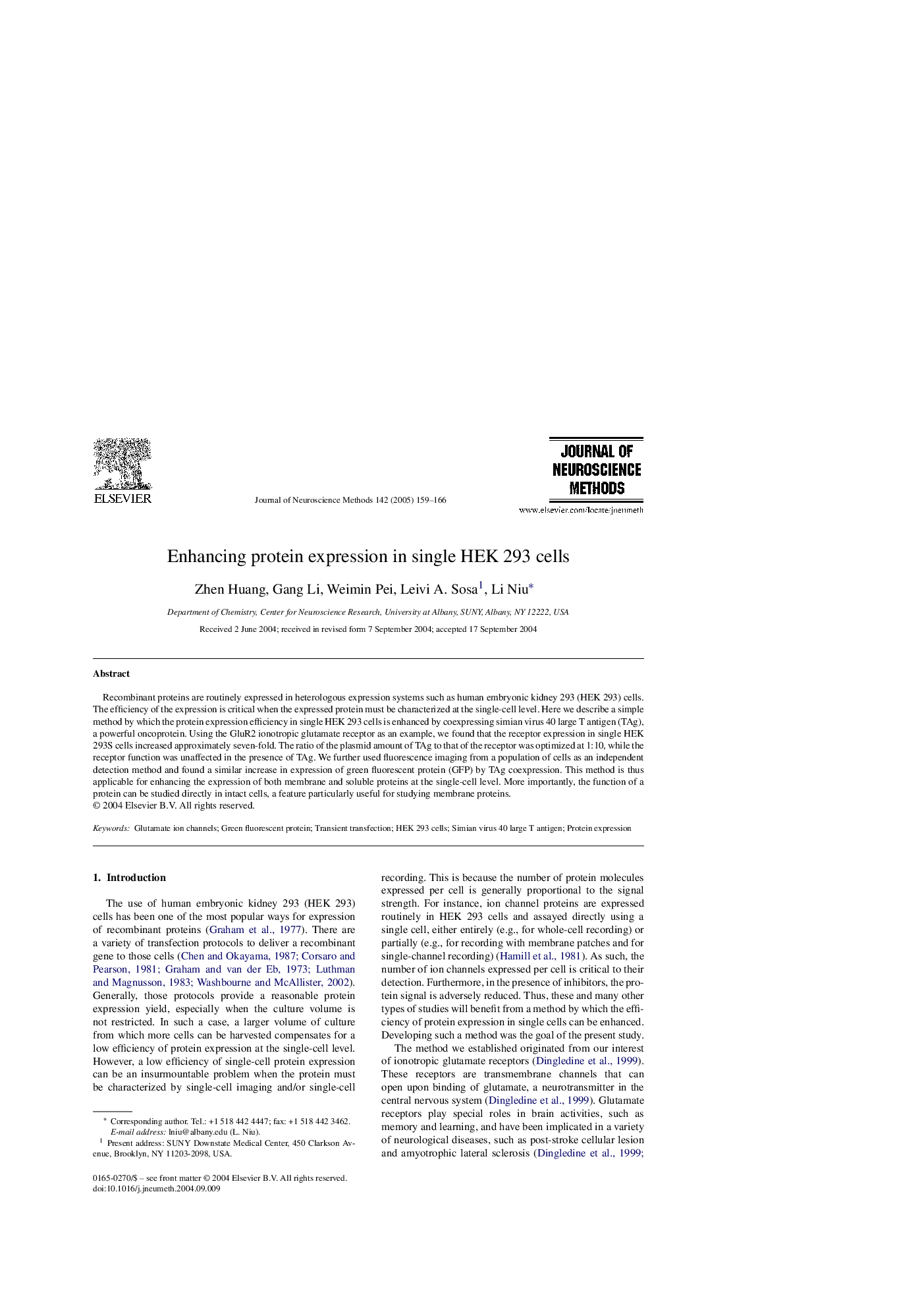| Article ID | Journal | Published Year | Pages | File Type |
|---|---|---|---|---|
| 9424190 | Journal of Neuroscience Methods | 2005 | 8 Pages |
Abstract
Recombinant proteins are routinely expressed in heterologous expression systems such as human embryonic kidney 293 (HEK 293) cells. The efficiency of the expression is critical when the expressed protein must be characterized at the single-cell level. Here we describe a simple method by which the protein expression efficiency in single HEK 293 cells is enhanced by coexpressing simian virus 40 large T antigen (TAg), a powerful oncoprotein. Using the GluR2 ionotropic glutamate receptor as an example, we found that the receptor expression in single HEK 293S cells increased approximately seven-fold. The ratio of the plasmid amount of TAg to that of the receptor was optimized at 1:10, while the receptor function was unaffected in the presence of TAg. We further used fluorescence imaging from a population of cells as an independent detection method and found a similar increase in expression of green fluorescent protein (GFP) by TAg coexpression. This method is thus applicable for enhancing the expression of both membrane and soluble proteins at the single-cell level. More importantly, the function of a protein can be studied directly in intact cells, a feature particularly useful for studying membrane proteins.
Keywords
Related Topics
Life Sciences
Neuroscience
Neuroscience (General)
Authors
Zhen Huang, Gang Li, Weimin Pei, Leivi A. Sosa, Li Niu,
